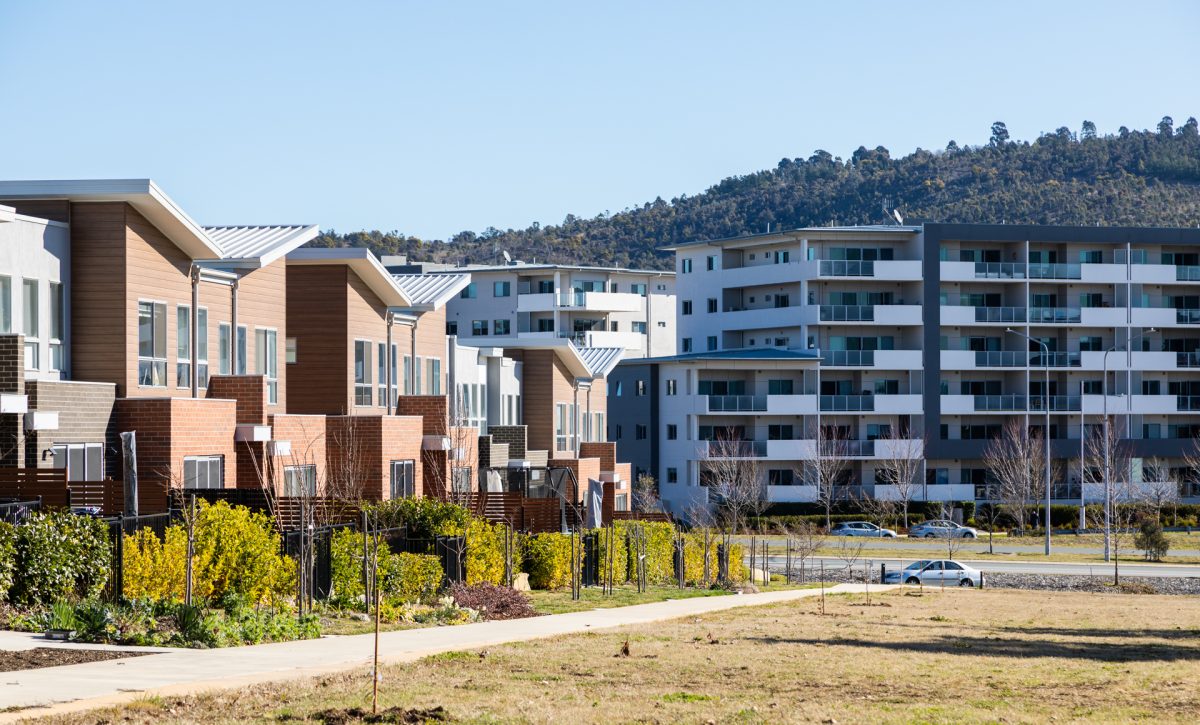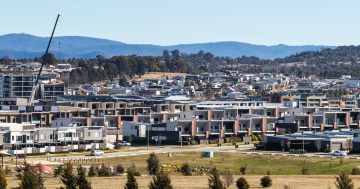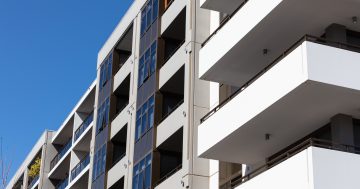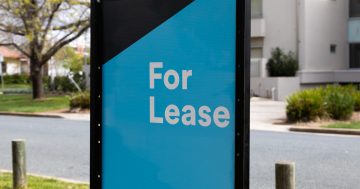
Housing in Coombs. Weston Creek/Molonglo had the highest vacancy rate. Photo: Michelle Kroll.
Canberra’s rental market has eased further, with more vacant properties available and the city’s notoriously high rents falling.
The latest data from SQM Research shows the vacancy rate increased to 2.1 per cent in June, the highest of any of the nation’s capital cities, and the number of available properties more than doubled compared with the same time last year.
Vacancies increased to 1282, up from 1215 in May and just 577 a year ago.
Rents overall fell 0.3 per cent over the month to 4 July, driven by a nearly 1 per cent drop in house rents. This compares to 20 per cent yearly increases in Sydney and Melbourne.
Unit rents rose marginally but were down 1.5 per cent for the year, while house rents were steady, representing an overall drop of 0.6 per cent over the past 12 months.
The overall median weekly asking rent in Canberra was $665, the second highest in the country, with houses at $774 and units at $557.
Median rents and vacancies varied across the city, and unsurprisingly there were cheaper properties in the outer suburbs.
The cheapest rents for both houses ($639) and units ($546) could be found in Tuggeranong, while the most expensive were in the Inner North and Inner South at about $1000 a week, although there was a significant fall (25.8 per cent) in three-bedroom homes in the Inner North last month.
House rents fell over the year by 7 per cent in Belconnen to $641 a week, by 8.2 per cent in Woden Valley to $733 and by nearly 9 per cent in Weston Creek/Molonglo to $668 but units there were up nearly 10 per cent.
Unit rents were under $550 a week in Belconnen, Gungahlin, Woden and Tuggeranong, depending on the number of bedrooms.
The highest vacancy rate in Canberra was in Weston Creek/Molonglo at 3.2 per cent, reflecting the number of new developments in the area, while the lowest was in Tuggeranong at 1.1 per cent.
The Inner North and South and Woden Valley all had high vacancy rates of 2.7 per cent, while Gungahlin was at 2.3 per cent and Belconnen at 1.6 per cent.
Chief Minister Andrew Barr has said this year’s easing of the market reflected government policies to boost the supply of properties, particularly units, but new student accommodation at the ANU may be playing a role as well.
It also appears that renters have more choice and are looking for value, especially in the units sector of the market.
Although the situation is much better than it was when the vacancy rate was under 1 per cent and rents were the highest in the country, renting in Canberra remains an expensive and challenging experience.
Mr Barr says the government’s planning reforms will be key to the development of sufficient housing, particularly medium-density homes, to cater for a population growth of 10,000 a year.
Nationally, vacancy rates rose to 1.3 per cent, with Hobart next after Canberra at 1.9 per cent followed by Sydney (1.7 per cent), Melbourne (1.3 per cent), Brisbane (1 per cent), Darwin (0.9 per cent), Perth and Adelaide (both at 0.6 per cent).
SQM says that while rents in the other capital cities except Hobart have continued to rise, the rate of increase has begun to slow.
Managing director Louis Christopher said there was now more evidence that the national rental crisis was past the worst but still a concern.
“Now, at 1.3 per cent, the rental crisis is not yet over and given our ongoing strong population growth rates it is very unlikely we will get to an oversupply of rental properties anytime soon,” he said.
“However, just an easing in the crisis can at least translate to a steadying of market rents after what has been an extended period of very rapid market rent growth.”




















